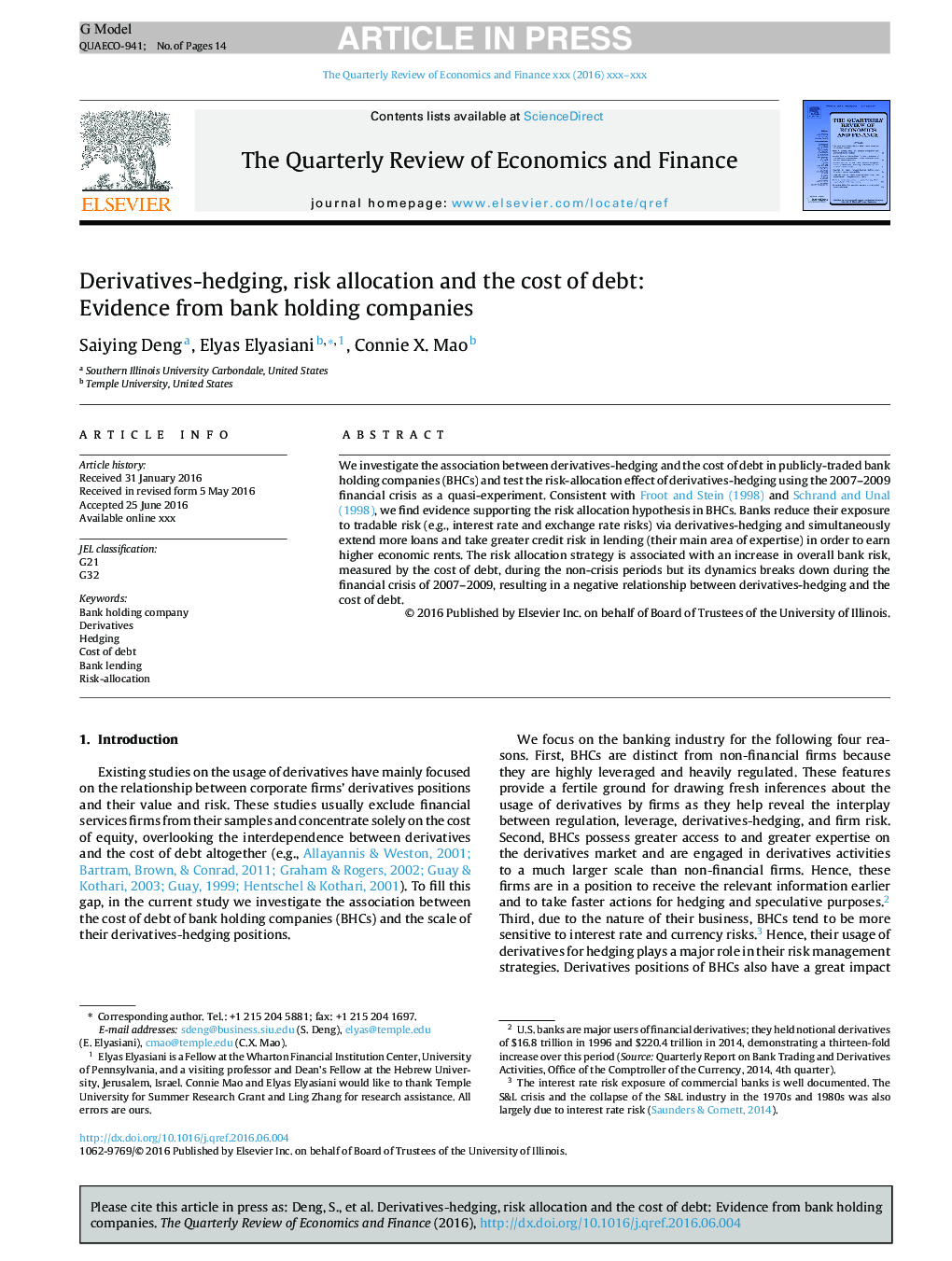| Article ID | Journal | Published Year | Pages | File Type |
|---|---|---|---|---|
| 5103551 | The Quarterly Review of Economics and Finance | 2017 | 14 Pages |
Abstract
We investigate the association between derivatives-hedging and the cost of debt in publicly-traded bank holding companies (BHCs) and test the risk-allocation effect of derivatives-hedging using the 2007-2009 financial crisis as a quasi-experiment. Consistent with Froot and Stein (1998) and Schrand and Unal (1998), we find evidence supporting the risk allocation hypothesis in BHCs. Banks reduce their exposure to tradable risk (e.g., interest rate and exchange rate risks) via derivatives-hedging and simultaneously extend more loans and take greater credit risk in lending (their main area of expertise) in order to earn higher economic rents. The risk allocation strategy is associated with an increase in overall bank risk, measured by the cost of debt, during the non-crisis periods but its dynamics breaks down during the financial crisis of 2007-2009, resulting in a negative relationship between derivatives-hedging and the cost of debt.
Related Topics
Social Sciences and Humanities
Economics, Econometrics and Finance
Economics and Econometrics
Authors
Saiying Deng, Elyas Elyasiani, Connie X. Mao,
